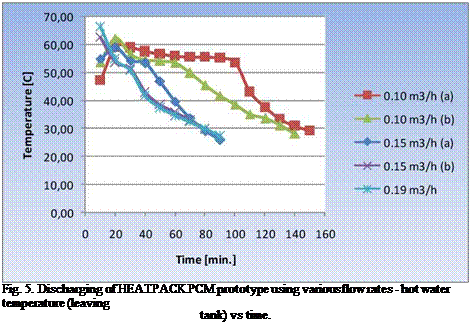Как выбрать гостиницу для кошек
14 декабря, 2021
Several discharging experiments were conducted at various flow rates of the incoming cold tap water (avg 12 °C) simulating the load. These experiments are summarized in Fig. 5 showing the temperature of the heated water leaving the tank as a function of time for experiments at various flow rates (0.1-0,2 m3/h).
Fig. 5. shows that it is possible to obtain heated water with a temperature above 30 °C for between 80 and 150 minutes depending on flow rates. Water above 45 °C was obtainable for 30 to 90 minutes depending on conditions. The power during discharging ranged between 4 and 11 kW depending on flow rates.
Especially notable with the discharging process is however the fact that by the time the temperature of the outgoing water dropped below 30 °C, only between 6 and 9 kWh had been discharged as compared to the storage capacity of 14 to 15 kWh. This is presumably due to the fact that as crystallization progresses, the heat transfer rate in the HEATPACK system configuration is reduced continuously.
|
Fig. 5. Discharging of HEATPACK PCM prototype using various flow rates — hot water temperature (leaving tank) vs time. |
 |
When the amount of crystallization has yielded between 6 and 9 kWh heat, the heat transfer rate is too low to heat the cold tap water to above 30 °C.